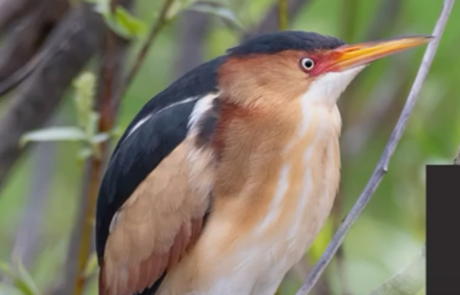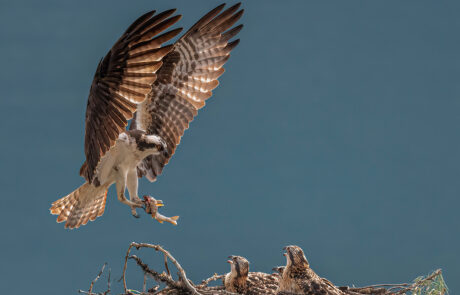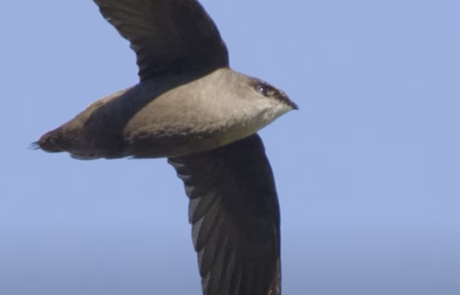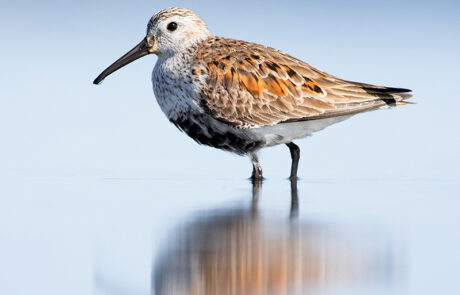Using Colour to Identify Birds
Although the time of year, age, and sex of a bird can significantly impact its plumage, colour is still a useful clue to help identify a bird. Remember, birds might fly away quickly without allowing a long look at their colours.
If you’re just getting a quick look at a bird, we recommend observing:
- First, the size and shape
- Then the overall colour pattern plus any really distinctive colours
- Then focus on the field marks
Overall colour might be something simple like noticing that the bird is black and white, spotting a bright yellow head, or noticing that their overall appearance is streaky.
Field marks are the finer details that can help differentiate between similar species. The variety can be a little overwhelming at first. When you’re just starting out, it helps to look for any distinct colours or patterns on the head and the wing. Once you’re in the habit of looking at those two places, then you can start looking at even finer details on the rest of the bird.
The White-throated Sparrow is a fine example of a bird with distinct field marks on the face. The black and white striped head makes up the crown. It has a bold black eyeline, a white eyebrow stripe (also known as the Supercilium), and yellow lores – the region between the eye and bill. This bird is well named, with a distinct white throat patch.
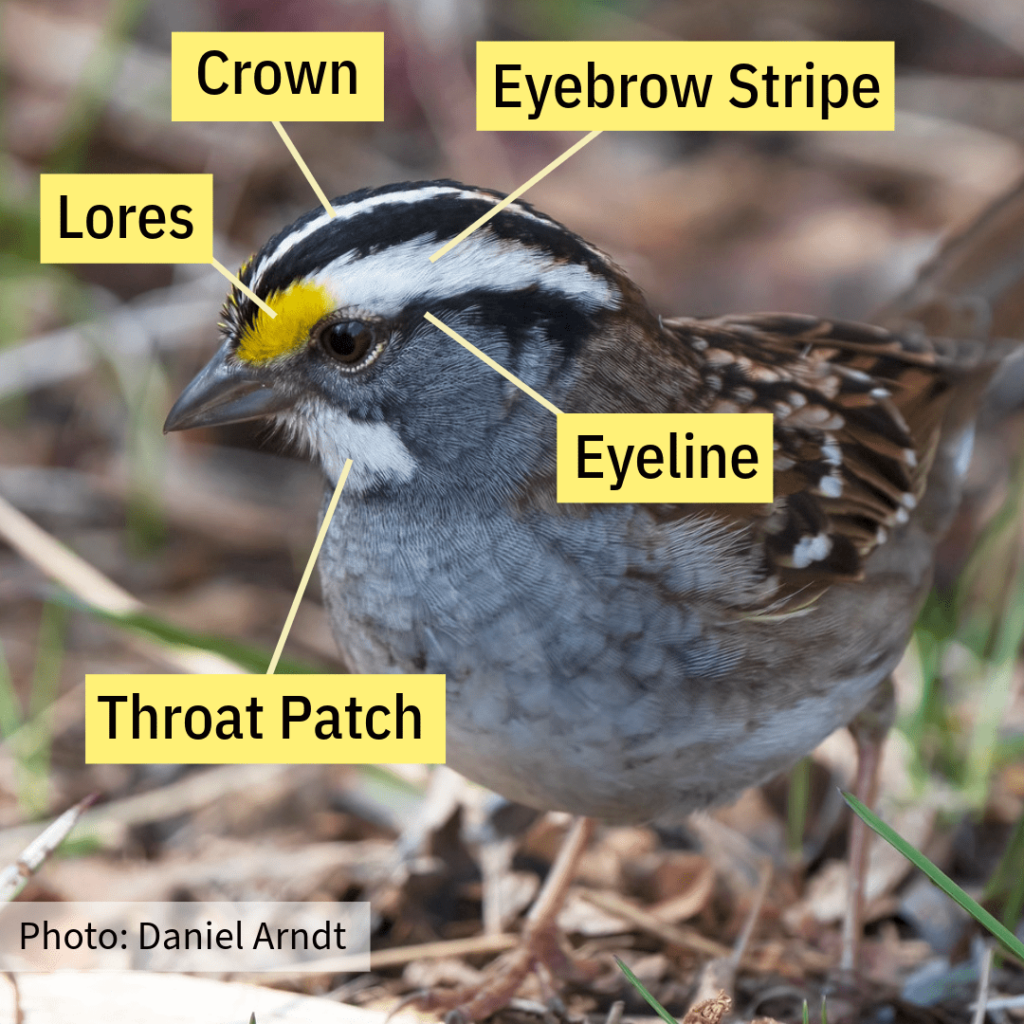
The field marks on males are often more distinct than on females or on juvenile birds, and sometimes field marks are hard to see regardless of sex or age. You might need to look at a bird for a long time before you spot the distinct field marks.
Take a look at the Ruby-crowned Kinglet in the three images below. This bird is aptly named for its bright ruby crown. However, only the males have the crown and they often keep it hidden. You’re most likely to see the crown displayed in the spring when males are trying to attract mates and defend territories.
Since the crown is not always displayed, we need to rely on other field markings like the eyering and the wingbar, which will be visible on both the males and females. This species is also a good one to try and identify based on behaviour. Ruby-crowned Kinglets can be quite jittery, like they’ve had a large cup of coffee. They’ll quickly bounce from one branch to the next and flick their wings frantically.
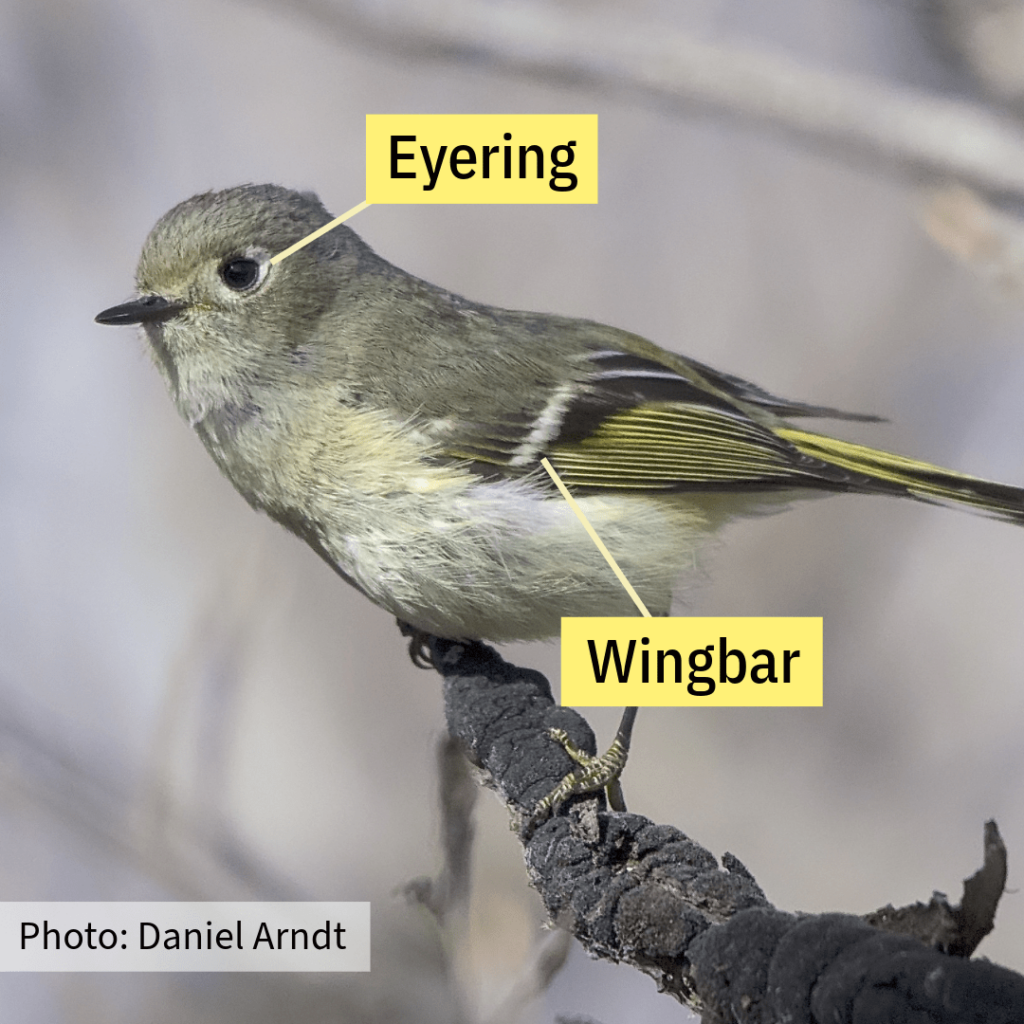
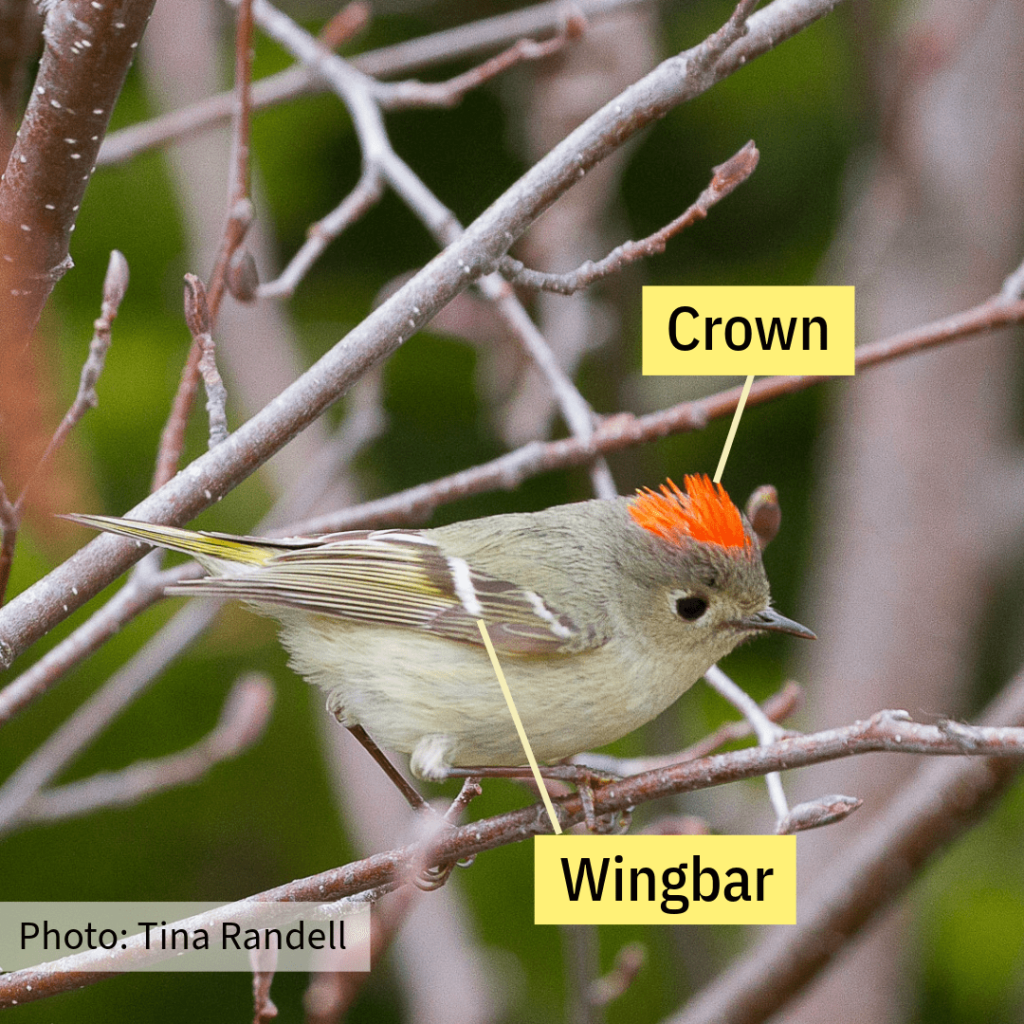
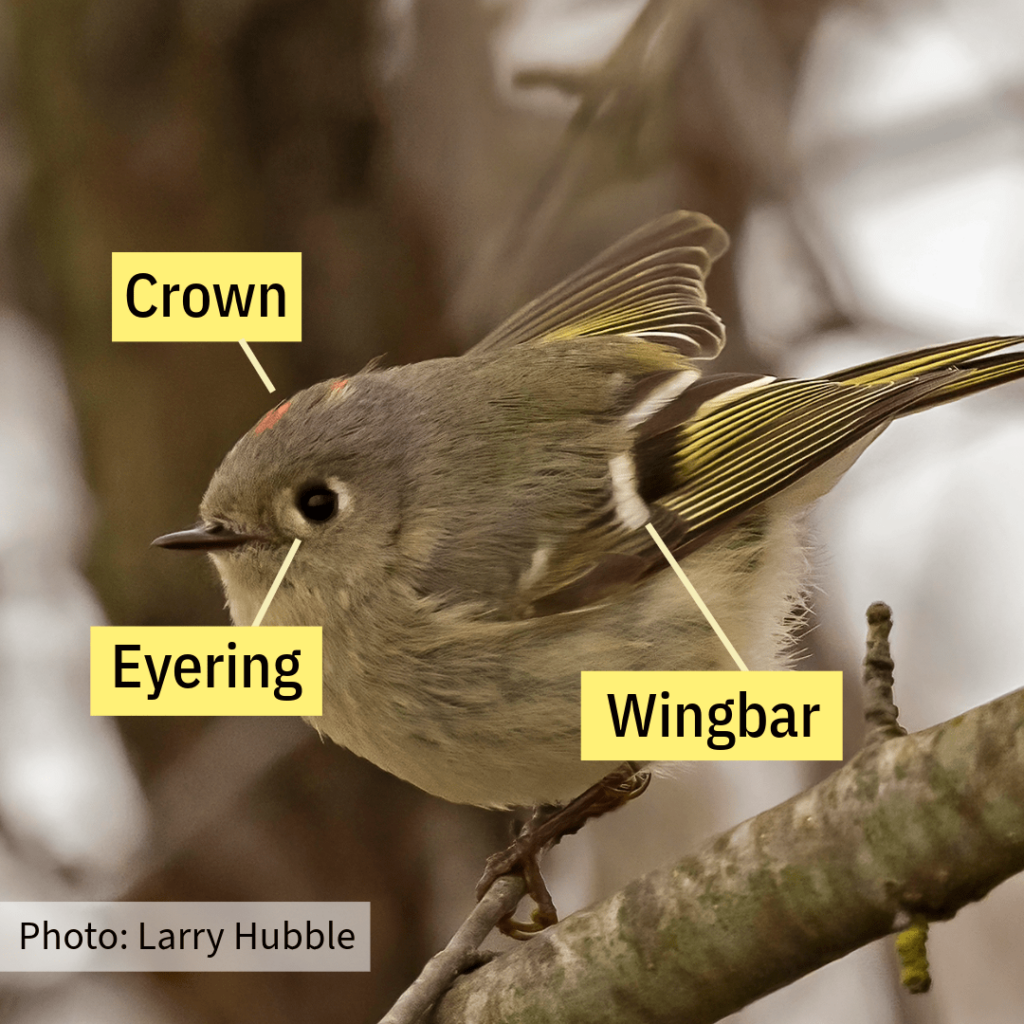
Here’s a few more examples of common species and how we would describe the overall colour and field marks.
The White-breasted Nuthatch has white underparts, a white face, and a grey-blue back. The Red-breasted Nuthatch has reddish underparts with some white on the face and breast, and a grey-blue back. While the red and white bellies might be all we need to identify these birds, sometimes we aren’t lucky enough to see the underparts. In that case, we can also look more closely at the field marks on the face. The Red-breasted Nuthatch has a black line that extends through the eye, creating a distinct white eyebrow stripe – this is a very useful feature to differentiate between these two species.
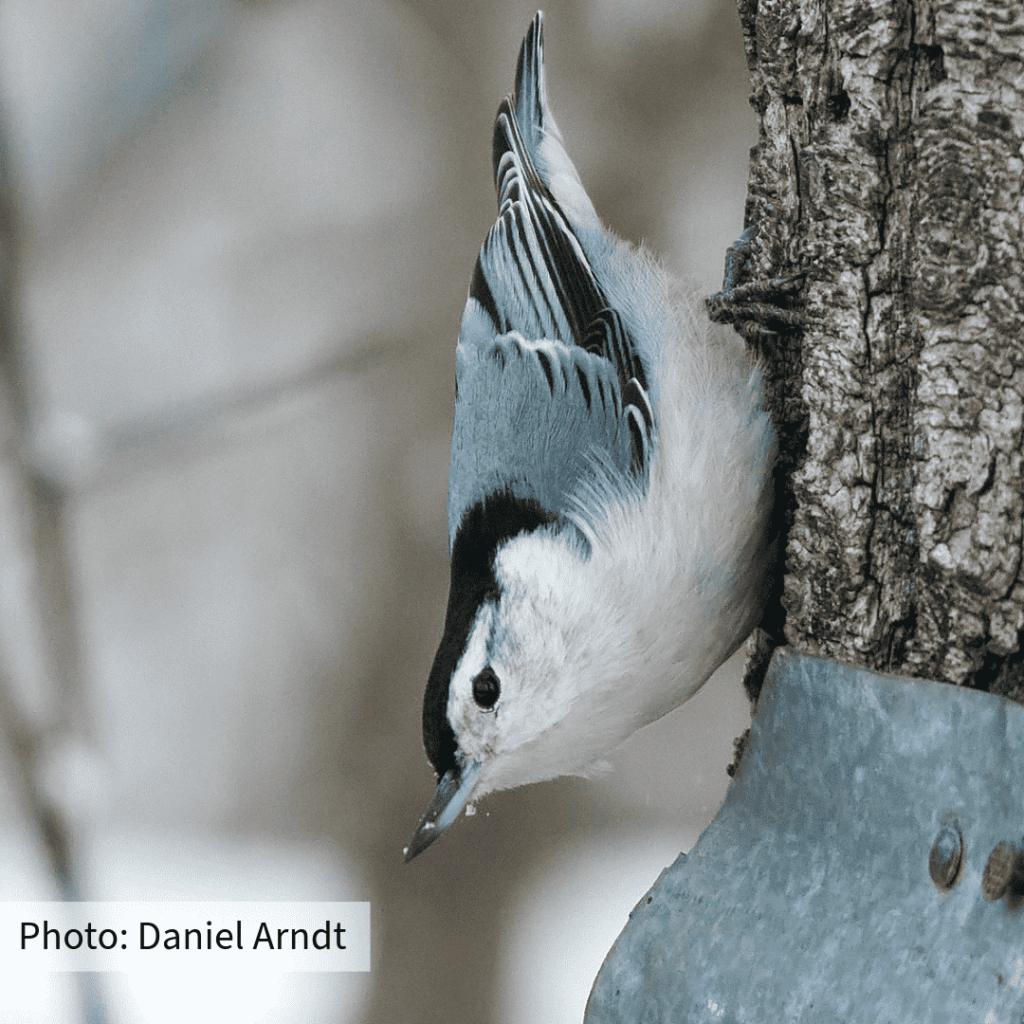
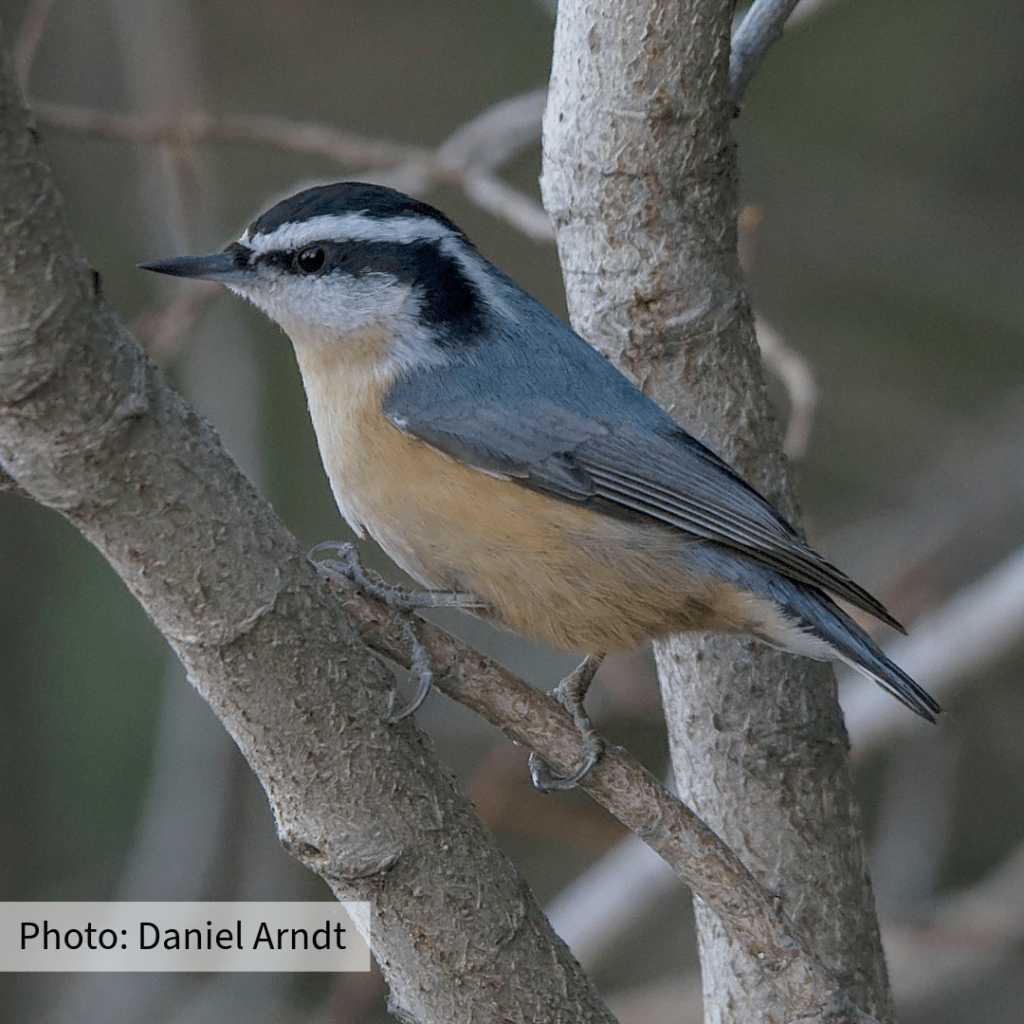
Here’s another example. These birds are both Red-winged Blackbirds, but one is male and the other is female. If you see these birds in the wild, you’ll notice right away that they are not quite the same size, but they are the same shape. You may also notice that they have the same bill shape as well. They’ll also be in the same wetland habitat, and may be behaving similarly to each other.
With a quick glance of the overall colour, you’ll note that the male is a glossy black, while the female is streaky brown. When we look closer at field marks, we see that the male has a distinct red and yellow shoulder patch. The female has fewer distinct characteristics, but we might note a lighter eyebrow that doesn’t extend all the way to the bill.
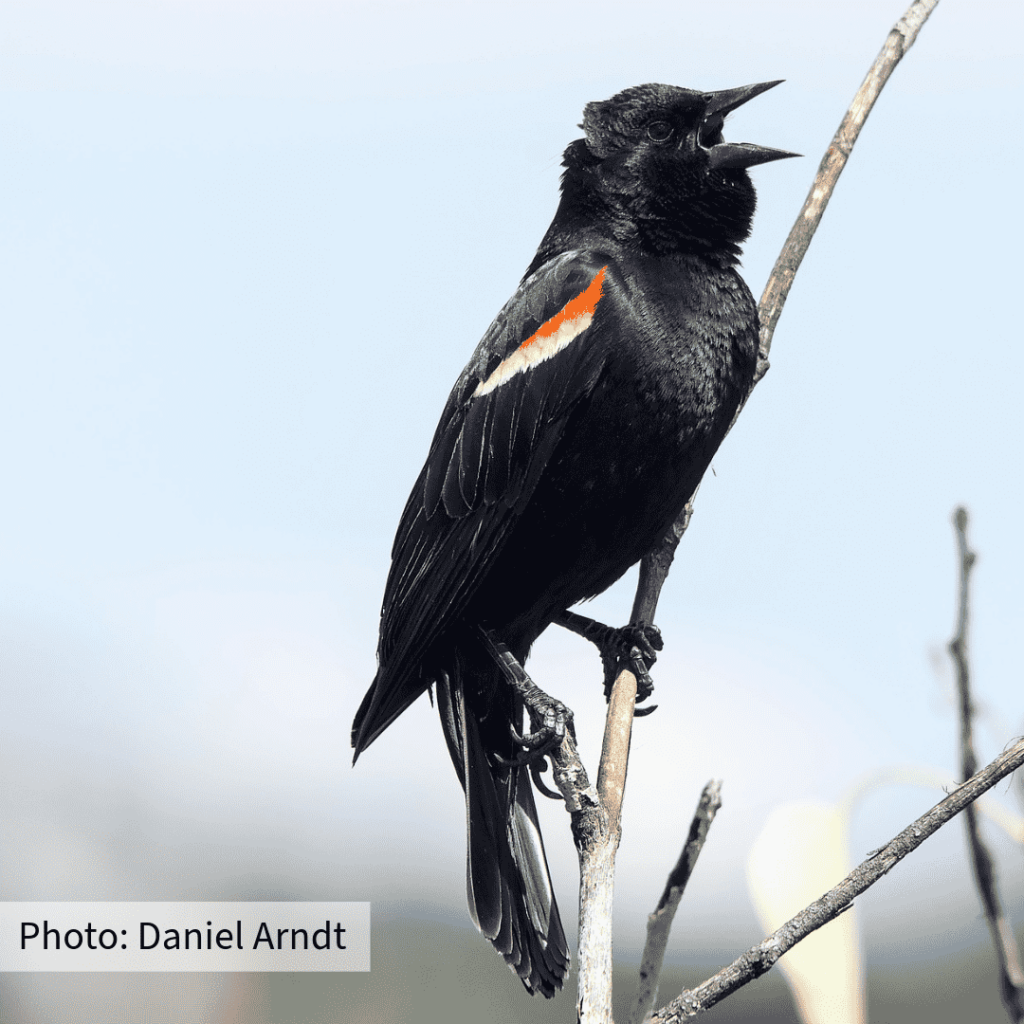
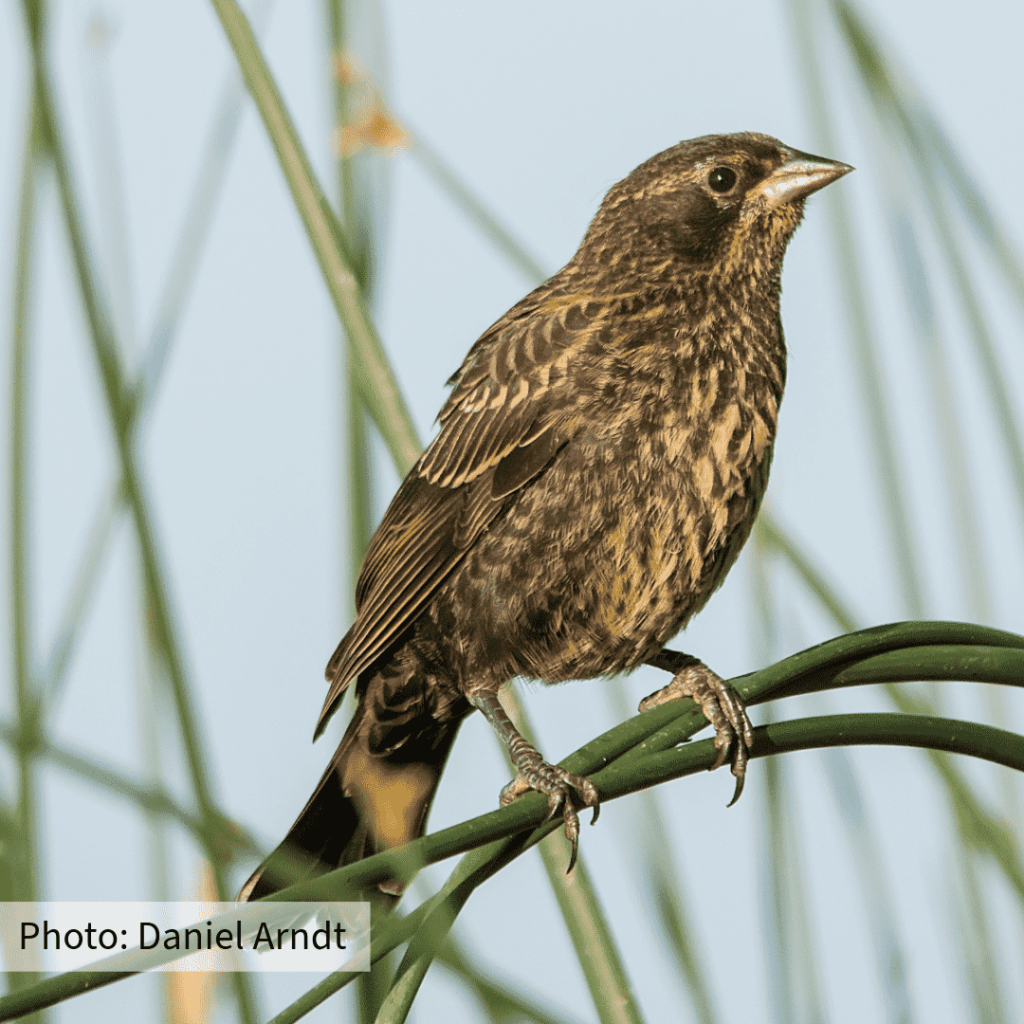
Time to practice!
Take a look at the three sparrow species below. Spend some time thinking about how you might describe their overall colour, and which field marks you might focus on. When you’re ready, click the drop down button below the images to see the name of the bird and the field markings we would find the most helpful to identify it. While you’re doing this exercise, also try to think about things like size and shape. A bird’s size can be hard to tell from an image, but remember the trick you learned with the Hairy and Downy Woodpeckers – you can measure the bird’s features against itself.
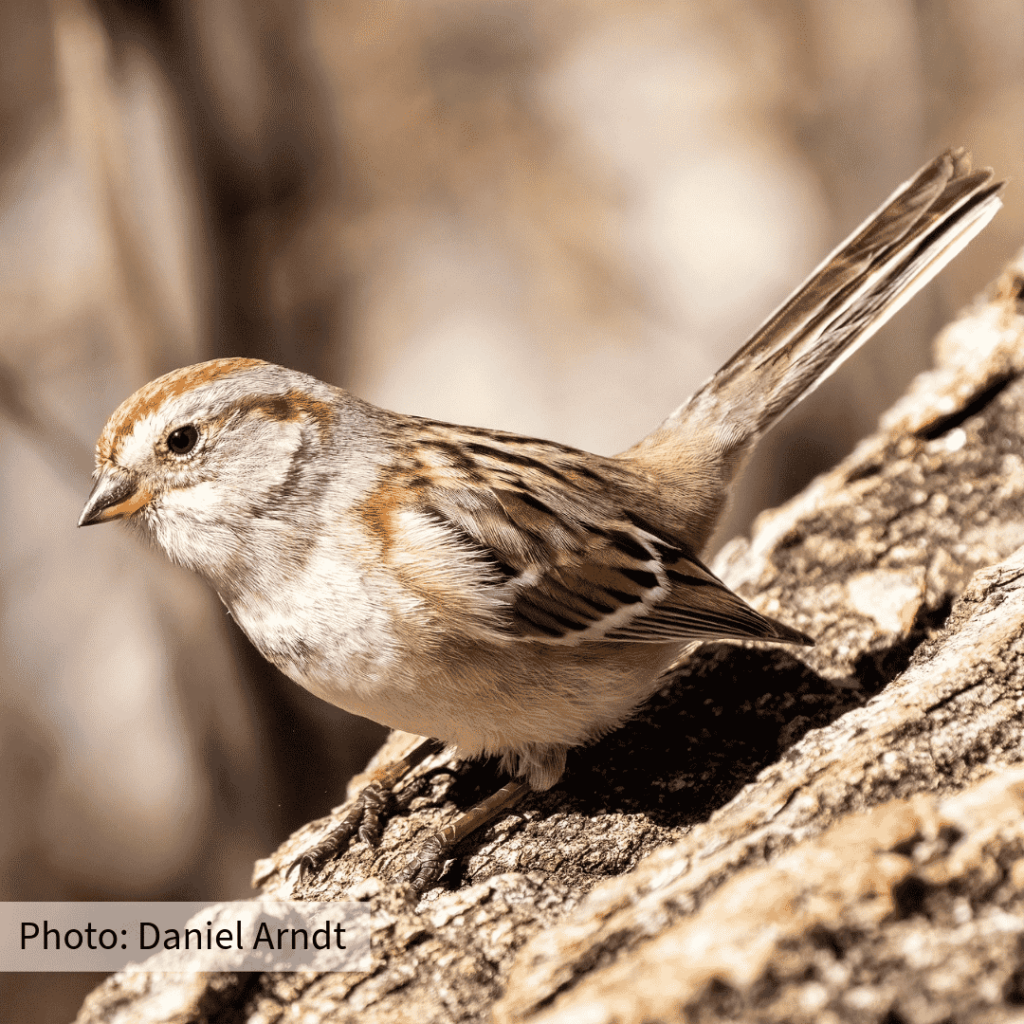
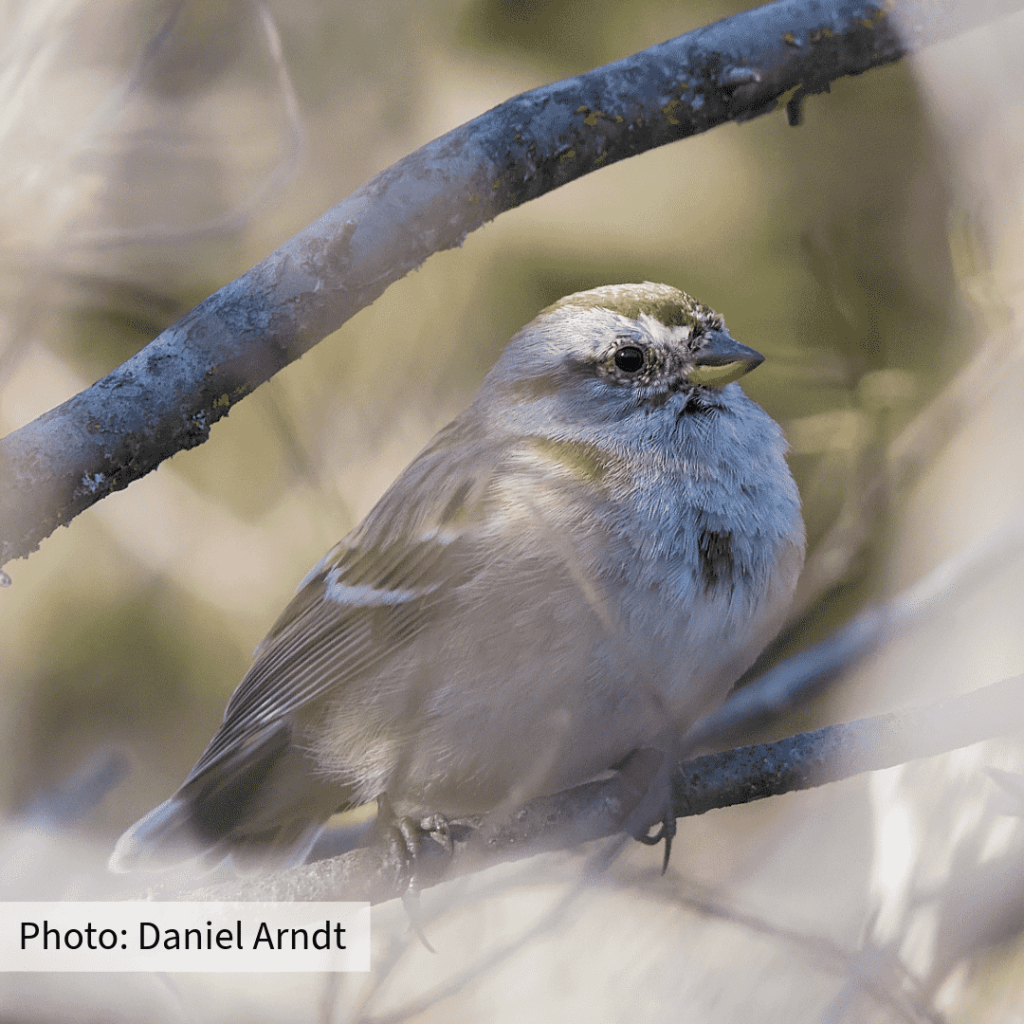
Which bird is it?
American Tree Sparrow: Overall, this bird has a light brown body without streaking on the underparts, and a light red-brown or rusty coloured cap on the head. Field marks include the rusty cap and eyeline, and the bill with two colours. Another really helpful feature that may help to distinguish it from other sparrows, is the dark spot on the breast.
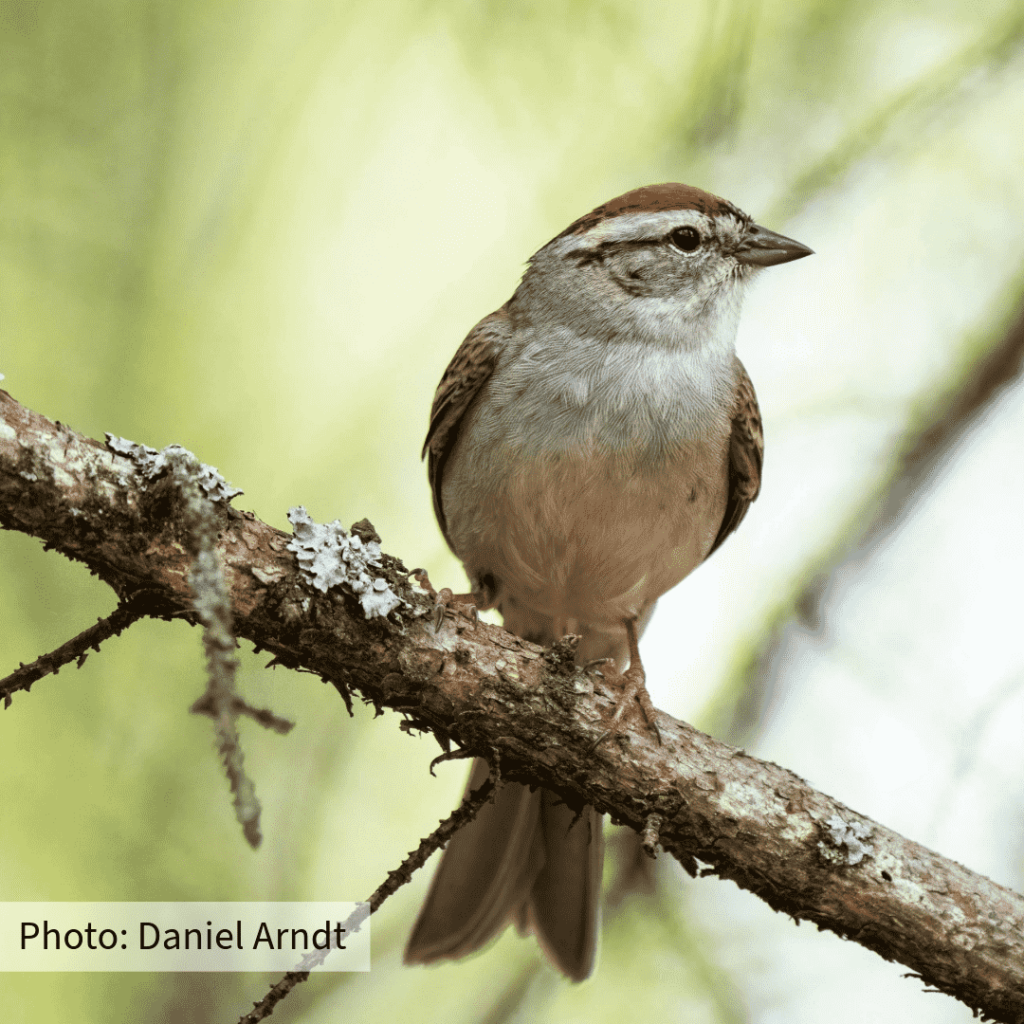
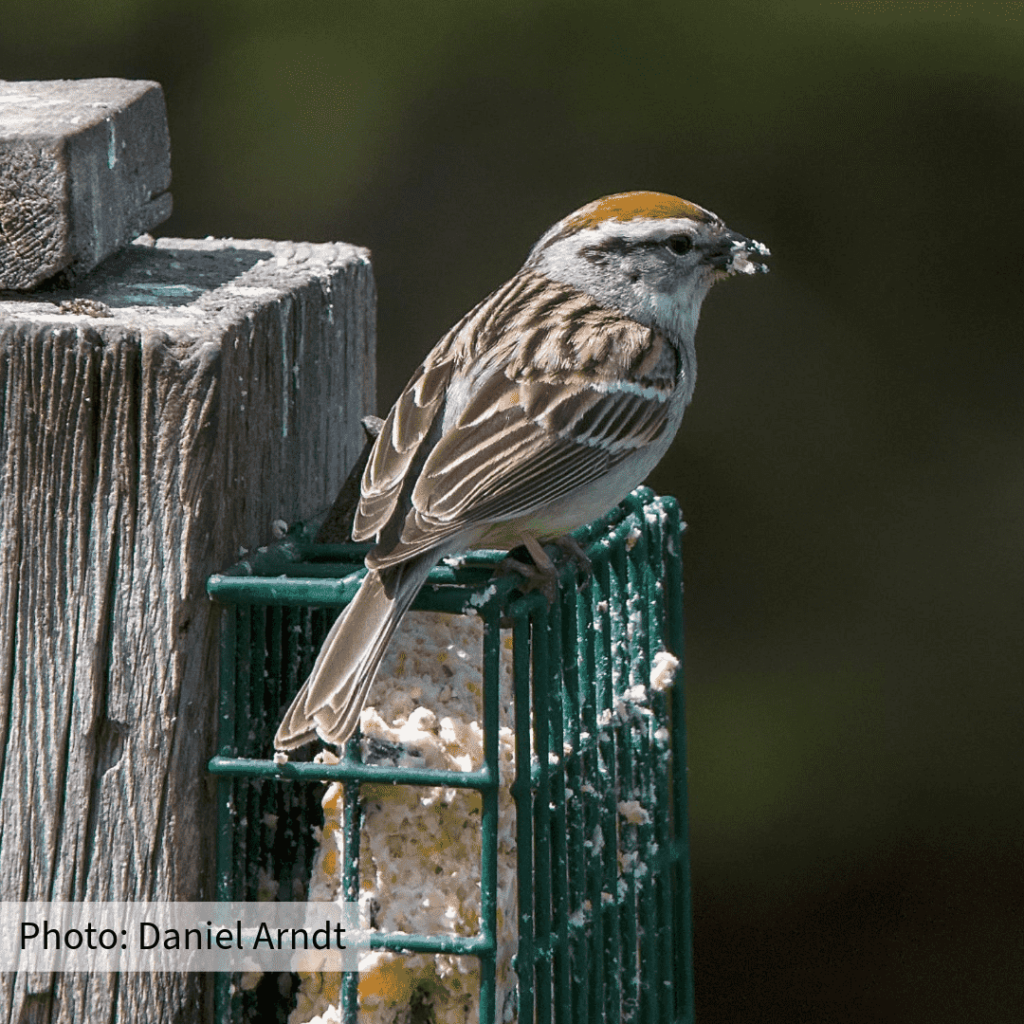
Which bird is it?
Chipping Sparrow: This bird has clear light grey underparts, with a rusty coloured cap, and streaky wings. The key field markings are the cap, and the black line through the eye. Notice how it goes all the way to the beak. If you compare this bird to the one we saw above, you’ll notice that the Chipping Sparrow’s bill is one colour, not two.
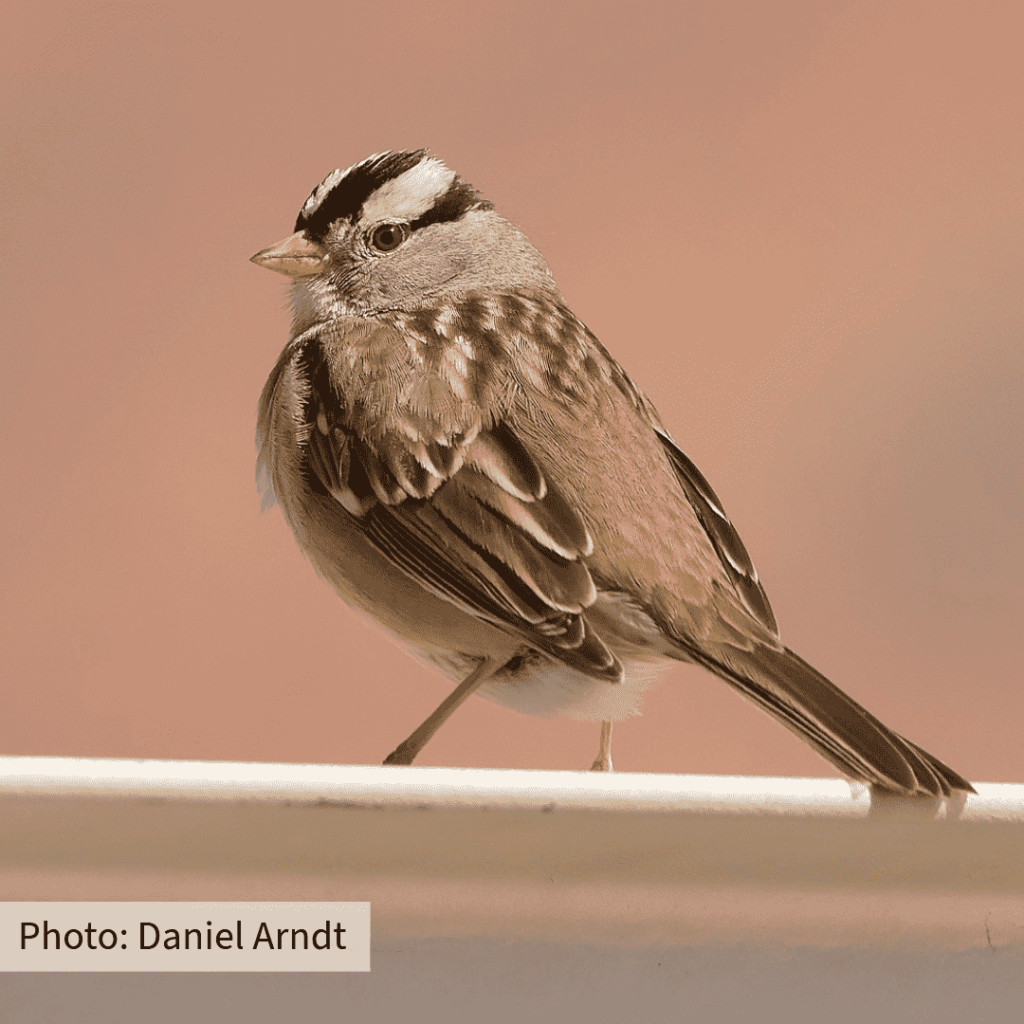

Which bird is it?
White-crowned Sparrow: Again, this bird looks similar to the ones above. You’ll first notice the overall colour is light grey and brown. The breast does not have streaking. Looking more closely, we notice a yellow or pale coloured bill. And of course, the feature it’s named for – the bold black and white stripes on the head, that give it a white crown, or cap.
Sparrows are often the same size and shape, so they’re a good bird to practice observing colour and field marks on. However, they can be tricky with very subtle differences! Don’t worry if you found this exercise a little challenging. You’re now better prepared for the types of field marks you might see.

